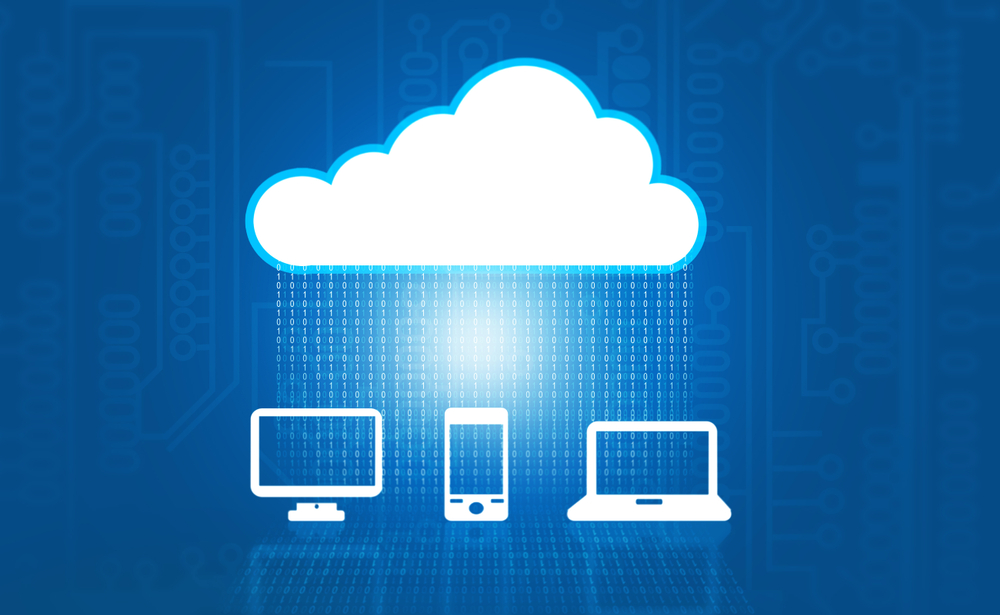
by Anna Kucirkova of IQS Directory
Reblogged with permission: https://www.iqsdirectory.com/resources/is-cloud-computing-really-better-for-business-survey-says/

In the next two years, the cloud computing market is expected to reach $411 billion in revenue, nearly doubling the 2017 count of $260 billion. As technology continues to evolve at exponential rates, businesses should be increasingly mindful of the dynamic nature of applications and practices like hosting. Cloud computing is an increasingly popular term, just as using the cloud for storage, applications, and business servers is an increasingly popular practice. Businesses of all sizes are implementing cloud technology to reduce sunk costs, overhead, and physical space dedicated to computing. But the term is still widely misunderstood and the use cases of cloud computing are not clear to all possible markets.
With the market increasingly favoring the cloud, businesses should pay attention in order to remain competitive internally and externally, as well as to ensure that they do not end up saddled with antiquated software applications that are being phased out as the cloud continues to receive more attention from providers across market segments.
In short, the cloud is a direct result of faster internet connections and a wider adoption of internet connectivity. In the early days of business and personal computing, the internet was relatively slow and expensive to operate, meaning that many applications were hosted on internal servers, which did most of the heavy lifting for operations from saving Word documents to running specialized business software.
Networks and individuals only accessed the internet to run searches, visit websites, or send emails–and even email domains were hosted on massive stacks of hardware in dedicated server rooms at companies of any significant size.
Today, a free Gmail account can transfer massive files at incredible speeds and gives users access to a suite of tools ranging from Google Docs and Spreadsheets to translation and cloud storage services. The only catch to all of this free software is that your device must be connected to the internet to access, edit, and save files stored within the cloud.
This caveat is already rendered nearly meaningless, as even mobile data networks are so fast, reliable, and affordable that individual smartphones can create more complex spreadsheets using Google Spreadsheets than an entire business server could handle a couple of decades ago.
What this really means for businesses is that it is no longer necessary to license expensive offline software–or even hardware–to run specialized business operations. Instead, cloud solutions allow businesses to scale seamlessly, remain constantly up-to-date with the latest software updates, and to run extraordinarily powerful programs.
Gone are the days of hot, noisy rooms full of stacks and stacks of servers to run business versions of popular software that are now free or cheap on any device with an internet connection.
Instead, businesses are investing in massive amounts of dedicated, secure cloud storage and space that allows them to run even the most complex operations and software using a triangulated network of hardware and software, while allowing far more flexible access and use cases than ever before.

Before cloud computing was popularized, a business could run out of memory on its dedicated servers. A new version of software could be released, which meant buying a whole new set of CD-ROMs and installing that software on every machine, while hoping and praying the old versions of files played nicely with the shiny new software.
Security was up to you and worsened the longer a given application had been on the market or that your servers had been set up with the same digital address.
Now, everything from saving a Word Doc to running complex specialized software happens through a triangulated set of computers and online addresses that mean that data and applications alike “live” in the software ether as opposed to on one machine that is prone to everything from damage to corruption to becoming slow and outdated, requiring costly manual transfer processes.
Cloud computing means using the internet to do virtually every task that used to require a dedicated machine, offline software, and ample hard drive space.

The cloud offers an impressive array of benefits for businesses. From the purely numbers-oriented pros like cost and space savings to the operational and IT boons, cloud computing is an obvious move for businesses. Still, as with any large changes, the benefits are nuanced and can require clear outlining and decisive decision-making to implement. Here are some of our favorite benefits of cloud computing:
There are multiple ways cloud computing can save your business money. Not only does a consistent subscription model provide your business access to ongoing software updates instead of a sunk cost in software licenses that will soon become outdated, it also allows businesses to hold onto valuable capital during growth phases while paying a small monthly subscription fee instead of large outlays for hardware like servers and memory banks and software like licenses and specialized programs for all of their employees.
Plus, as hardware gets cheaper and more efficient, those benefits are far more immediate when distributed across a cloud subscription than when offered incrementally as businesses upgrade hardware while their old models rapidly depreciate to obsolescence.
Running the cloud frees up entire rooms that used to be used for servers, which saves massive amounts of energy, rent, and floor space. Plus, not having all of your business’ valuable information stored on site leads to one of the largest benefits of the cloud.
The cloud protects your data multiple ways. Not only is it safe from natural disasters, spilled coffee, or other catastrophic events that can ruin computer hardware, but it is also typically protected with far more layers of information security than an individual business can maintain on a daily basis.
Information and software that’s stored in the cloud is typically ‘stored’ in multiple places at once, so it is virtually disaster-proof and far easier to recover in worst-case hacking scenarios. Plus, it can be accessed from anywhere, which enables a greater degree of flexibility than ever before when it comes to working remotely, collaborating across office locations, or even moving office locations without interrupting business processes.
Subscription models and scale-able solutions allow businesses of all sizes to access world-class software that even a few years ago had prohibitively high license and purchase costs.
Whether you’re a small business with a big idea or a big business that used to dole out software selectively to cut costs, the cloud era has democratized software, which is a boon for every employee looking to gain experience and every business looking to compete in the competitive marketplace.

In addition to all of the tangible benefits, cloud computing is indisputably the future of computing. Delaying its implementation to the sunk cost fallacy only delays the inevitable and reduces a business’ competitiveness in the rapidly-evolving digital landscape.
Plus, it provides meaningful benefits to employees like the ability to work remotely and meaningful benefits to the whole world like reduced energy and real estate consumption. As the cloud computing market doubles over the next two years, the only real question is how soon can you switch everything over.
So now that you've been convinced to throw all of your computers and servers in the dumpster and sign up for a dozen subscriptions, let's be honest about the reality of the Cloud. Some processes and software systems can be moved to the cloud, and some still need to stay on premise.
Large OEM's and certain industries still need to keep their data inside their firewall. Defense and Medical companies may need to keep their systems on premise for data security and control. Workstations are still needed to have the hardware powerful enough to run many applications. Those same applications may be large, have complex and resource intensive analysis and processes that do not lend well to remote use.
The Cloud is powerful, growing and relieves a lot of traditional costs, but is not yet a Panacea for all current technology costs. As the Cloud's ability to handle more complex technological systems grows, more and more may be moved to the Cloud, but with the threat of data breaches, and the current complexity of some software systems, it is not ready yet for a full transition.
3DCS Variation Analyst is not available itself as a Cloud Application, but takes advantage of the Cloud by utilizing Parallel Works processing power to run simulation analyses in the Cloud. This drastically reduces the amount of time it takes to run simulations; important when running large models, compliant (FEA) models or very high density mesh models.
Taking advantage of Parallel Works cloud computing let's you get your results fast, and run many different models simultaneously in the cloud without using additional licenses or bogging down your license, freeing you up to continue working while your model runs simulation analysis in the background without any slow down in your local machines processing.
QDM WEB is available as either an on-premise system or hosted in the Cloud. When using the Cloud deployment, manufacturers can gain access to a complete Enterprise level SPC system at a much lower cost. This is because the server, primary software gateway and database are all hosted on the Cloud server, making the only software needed a template maker, if that at all. Everything can be accessed through a Cloud web portal, and scaled quickly up or down with additional users.
With the Cloud available to pick up the weight of analysis and for hosting SPC Systems, small manufacturers can now access SPC systems previously reserved for larger organizations. With the use of 3DCS Cloud Computing, a single user can get enormous outputs from a only one license, putting large or exhaustive analysis onto the Cloud while continuing to model with their license.
Learn more about DCS Solutions with the DCS Webinar Series, starting again in January 2019!
These Stories on CATIA
No Comments Yet
Let us know what you think